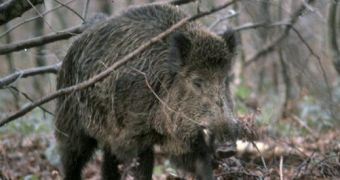Could you imagine your life without ham? Pork is essential for the European cuisine. Now, a team has attempted to shed light on how pig husbandry emerged in Europe.
Livestock herding appeared in the Near East about 11,000 years ago, when sheep were the first meat-providing domesticated animals. Three hypotheses have been proposed regarding the way animal husbandry later emerged in Europe: migration to the west, cultural crossing, or Europeans may have domesticated wild animals on their own.
The team led by archaeologists Greger Larson and Keith Dobney at Durham University in the U.K. extracted 221 samples of mitochondrial DNA from the jaws and teeth of wild and domestic boars, coming from over 140 archaeological sites in Europe and western Asia, up to 13,000 years old, compared with samples from 323 modern pigs.
The first European domesticated pigs, up to 7500 years old, clearly came from a genetic Near Eastern stock, thus, they entered the continent by human migration. But soon after, Europeans started to domesticate the local wild boars, which rapidly replaced the Near Eastern strains: in only 500 years, the percentage of individuals bearing European genetic markers rose from 5% to 95%.
The arrival of domestic Near Eastern pigs could have inspired Europeans to domesticate their own animals, or maybe the new colonists continued with their habit of domesticating wild boars, now, from the local European stock.
It seems that all three models of livestock domestication worked for pig husbandry in Europe and the same could have occurred with the domesticated cattle, whose wild ancestors also inhabited both Europe and the Near East. With sheep, it is less likely, as there were no native European wild sheep (the European mouflon from Corsica and Sardinia is a feral (marooned), not a true wild, sheep).
"However, the authors have not completely ruled out the possibility that some Europeans were taming pigs before the arrival of the Near Easterners, which would not be easily detectable through DNA analyses." said archaeologist Marek Zvelebil of the University of Sheffield, U.K.
There is also the issue regarding whether researchers correctly differentiated wild pigs from the smaller domestic pigs or not.
"Because these differences start out slight when domestication first begins, the team might be on "shaky ground" drawing conclusions about the earliest stages of domestication." said Simon Davis, a zooarchaeologist at the Portuguese Institute of Archeology in Lisbon.

 14 DAY TRIAL //
14 DAY TRIAL //